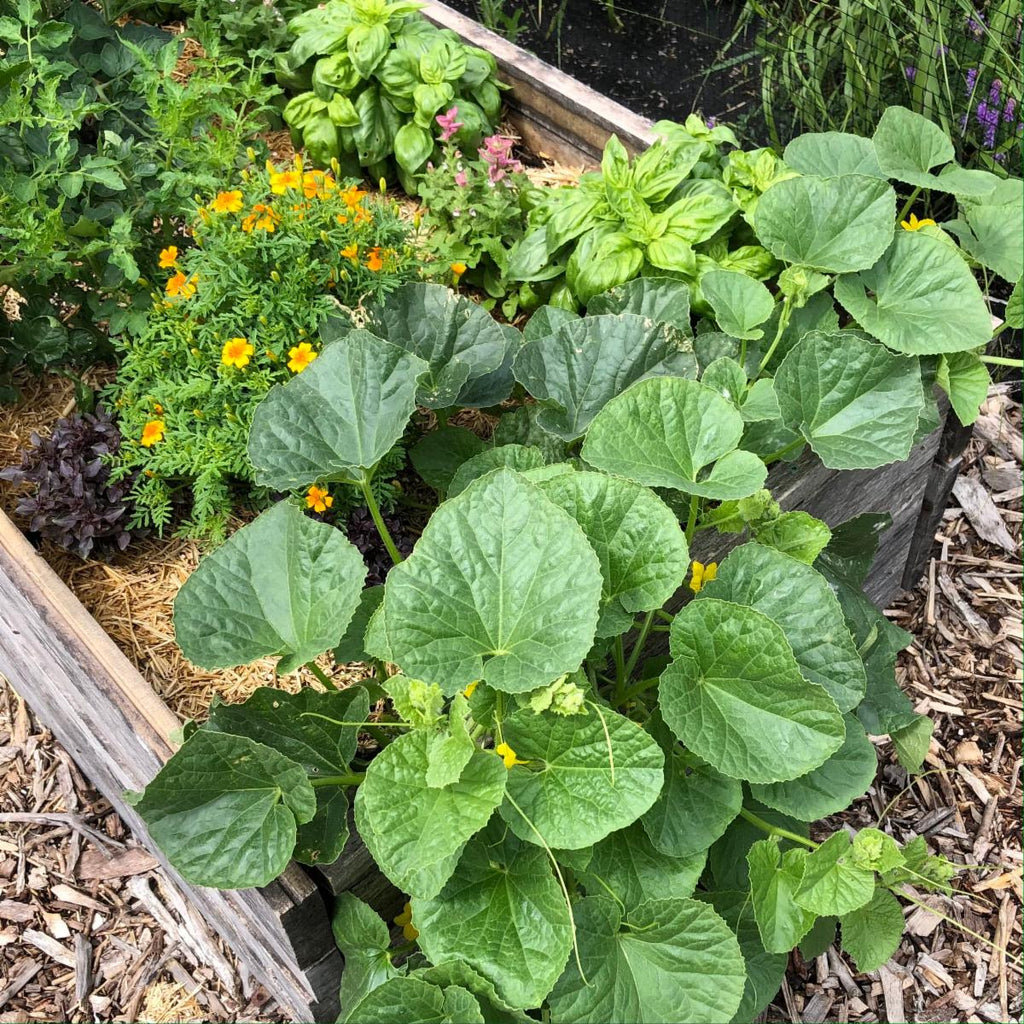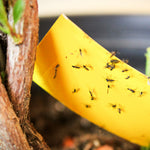As we come into mid-July, an important gardening task is fertilizing our plants - both in-ground and in pots. For some readers, this may sound repetitive, as you've been fertilizing all along. But for many, it is an important tip, since plants will start to lose their punchiness if they don't get the nutrients required to keep the show going strong - and it is much easier to keep plants looking great as opposed to correcting nutrient deficiencies later on.
In today's blog, we'll look at different ways to fertilize plants (so you can match the approach that will work best for your gardening style), and also several categories of plants and the best fertilizers for each.
First and foremost, do something...
If you are new to applying fertilizer, the most important rule of thumb is that something is better than nothing. You don't have to become an expert at understanding N-P-K to get results, but you will love seeing your plants respond as you go ahead and fertilize!The absolute easiest way to get started is by adding compost to your gardens and pots, as there is no way you can go wrong or damage your plants. As followers of our newsletter will know, our go-to compost options are Sea Soil and worm castings, both of which can be added as a top dressing to garden and potted plants. These composts have more nutrients than a home compost, are weed free and are very consistent; but fully cured homemade compost is wonderful too.After compost, the next best option is a liquid all-purpose organic, which can be applied to almost all types of plants indoors and out. By the way, for many reasons, we only use and promote organic fertilizers at Sage Garden; one of the most important reasons for this is that you will never burn your plants with all-purpose organic plant food.All-purpose organic fertilizers are balanced, with the three numbers on the label being similar, so all of the key nutrients are available and therefore all of the corresponding fundamental plant functions are supported equally. Liquid all-purpose fertilizers are usually applied by mixing the concentrate in a watering can, and are typically applied every 7 - 14 days... but again, if you have not been doing this, starting now is still a really great idea!
N-P-K, we do have to talk about this...
Most people realize that fertilizers are formulated around three numbers that are prominently displayed on the packaging, but not everyone knows what these mean. It's actually pretty easy; the N-P-K represents nitrogen, phosphorous and potassium, the three minerals considered essential for healthy plant growth. The first, nitrogen, is mostly associated with leafy plant growth. The second, phosphorous, is associated with roots and flower development. The third, potassium, makes everything work better and is also very important to how plants manage water. The relative ratio between these three minerals within the fertilizer influences what aspects of your plant's development are most impacted when you fertilize... but more on that in a sec.It is important to point out that N-P-K is not the whole story, since plants also require many secondary minerals to live up to their full potential, plus the availability of nutrients (the ability for plants to absorb them) is at least as important as the presence of these minerals in a given soil or fertilizer. But, knowing what N-P-K represents makes navigating fertilizer options easier.One last note on N-P-K; organic fertilizers always have relatively low numbers (e.g. 4-4-4) vs. mineral salt (chemical) fertilizers that are usually something like 20-20-20. The reason behind this is that mineral salt fertilizers are highly soluble in water, and much of the nutrients run off when applied, whereas the nutrients in organic fertilizer are less soluble and therefore stay in place better; as such, a lower concentration of minerals is required to achieve the same results.
Liquid vs. granular slow-release...
Some gardeners love getting very involved with their plants on a regular basis, while others prefer to minimize the "chores". Both approaches can work when it comes to fertilizing, you just need to choose the option that suits your style. As already noted, liquid fertilizers are typically applied every 7 - 14 days, and work best when you don't stray too far from the label recommendations (at least during the very active growing months). Slow release options are typically applied every few months, so much less frequently. Application is as simple as sprinkling onto the soil surface and then watering. There are organic liquid concentrate and organic slow release options for all types of plants, indoors and out.Another format for slow-release fertilizer is organic spikes, which are inserted into the soil every three months. Super easy! The main thing to know about these is that they are best suited to potted plants, but do come in formulations specific to veggies, ornamental containers and all-purpose.On average, liquid concentrates are less expensive per application compared to the slow-release options - but all deliver value and results, so I would recommend choosing an option based on what will match best with your gardening personality. All-purpose vs. specialty options...
All-purpose vs. specialty options...
As we learned earlier, the relative ratio of each nutrient has bearing on what plant function is promoted when fertilizer is applied. It makes sense that an emphasis on nitrogen (N) relative to phosphorous (P) will encourage leafy growth, while a higher P number will encourage more underground growth (roots) as well as flowering. So, for example, it is common to see both "transplant" and "bloom" fertilizers with a higher middle number, while a higher N fertilizer will be ideal for foliage plants and leafy greens. High potassium (K) fertilizer is often used for "stress" reduction, for example on plants that have had winter damage or are struggling after transplanting. Beyond the various N-P-K ratios, additional specialization can be achieved by the inclusion of miro nutrients like calcium (common for fruiting veggie fertilizers, as calcium is essential to healthy fruit development) or sulphur (important for acid-loving fruiting plants, like blueberries and strawberries). Amendments such as greensand and glacial rock dust contain a wide array of micronutrients, and many growers swear by these to achieve higher yields on edible crops and stronger blooms on ornamentals.Options like corn gluten serve a dual purpose, providing high N for green lawns while also acting as an effective pre-emergent natural herbicide, while wool pellets are both excellent N fertilizer and hold and slow release water very effectively. Kelp is a predominantly K fertilizer but is loaded with phyto-enzymes that influence plant growth in many positive ways outside of the benefits of mineral nutrients.So, specialized fertilizers definitely serve their specific purposes really well... but if you had to choose only one product, an all-purpose will always be much better than not fertilizing at all, and may pay forward by keeping things simple.Some fertilizers are used in combination. For example, we add compost to all of our pots and use an organic all-purpose; as another example, it is common to apply a main fertilizer supplemented by kelp on alternate weeks, as each of these inputs delivers different and complementary benefits. But as a rule for most people, the simpler your program the more likely you are to follow through.
Beyond the various N-P-K ratios, additional specialization can be achieved by the inclusion of miro nutrients like calcium (common for fruiting veggie fertilizers, as calcium is essential to healthy fruit development) or sulphur (important for acid-loving fruiting plants, like blueberries and strawberries). Amendments such as greensand and glacial rock dust contain a wide array of micronutrients, and many growers swear by these to achieve higher yields on edible crops and stronger blooms on ornamentals.Options like corn gluten serve a dual purpose, providing high N for green lawns while also acting as an effective pre-emergent natural herbicide, while wool pellets are both excellent N fertilizer and hold and slow release water very effectively. Kelp is a predominantly K fertilizer but is loaded with phyto-enzymes that influence plant growth in many positive ways outside of the benefits of mineral nutrients.So, specialized fertilizers definitely serve their specific purposes really well... but if you had to choose only one product, an all-purpose will always be much better than not fertilizing at all, and may pay forward by keeping things simple.Some fertilizers are used in combination. For example, we add compost to all of our pots and use an organic all-purpose; as another example, it is common to apply a main fertilizer supplemented by kelp on alternate weeks, as each of these inputs delivers different and complementary benefits. But as a rule for most people, the simpler your program the more likely you are to follow through. How long to keep up with fertilizing...
How long to keep up with fertilizing...
Veggies and other annual plants, in the garden and pots, will benefit from fertilizer late into summer; houseplants benefit from plant food year-round (although usually half strength in winter); while lawn, trees and hardy perennials should not be fertilized after early August, so as to avoid a late season growth spurt just as they should be going into natural dormancy.
Some specialty plants such as carnivorous and air plants derive their nutrients differently, and should not generally be given supplemental fertilizer (there can be exceptions to this, though). Hopefully, this quick overview provides supportive info to help you keep your plants flourishing this season! Please drop by and ask any of our staff if you have additional questions about choosing the best organic fertilizer for your needs, we look forward to helping.
Hopefully, this quick overview provides supportive info to help you keep your plants flourishing this season! Please drop by and ask any of our staff if you have additional questions about choosing the best organic fertilizer for your needs, we look forward to helping.







